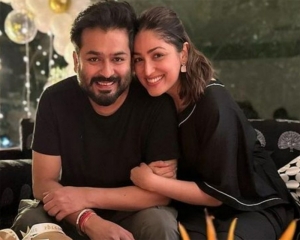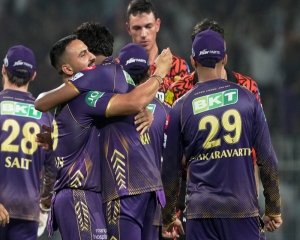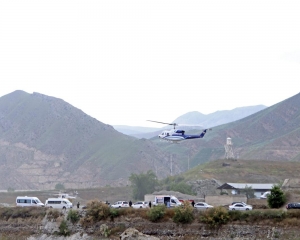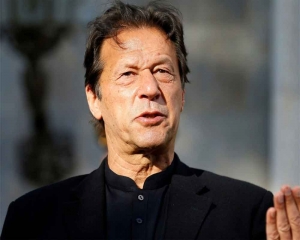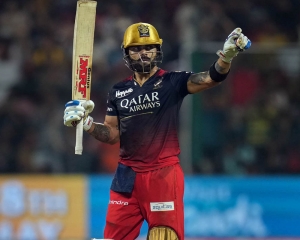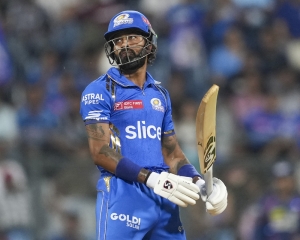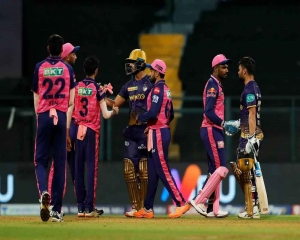I have known Sidharth Mishra for a long time spanning over two decades. I vividly remember the 1998 Lok Sabha elections in Delhi where we covered several political events together for our respective newspapers. It was followed by the next general elections of 1999. Then, I was working with The Hindustan Times while Mishra was with The Pioneer. The then Delhi strongman Madan Lal Khurana was at the peak of his political career and popularity and both of us shared several cups of tea, coffee and snacks with him while discussing politics in general and latest developments in Delhi politics in particular.
During the course of covering politics, it was not only Khurana but several political leaders of Delhi, cutting across the political divide, where we repeatedly went to get news and information for our respective newspapers. You name a Delhi political leader and we were there to get the latest about him or her in the days prior to WhatsApp and other forms of social media. Personal interaction was the only way of getting news and information in that era for journalists other than the wired telephone. Being political reporters, it was our bread and butter to get into the heat and dust of Delhi politics with all its accompanying sweat and running around.
Mishra wears many hats—journalist, editor, political commentator, analyst, educationist and a trainer of numerous journalists over the years. His works on Indian Media has been published from Oxford University Press and National Book Trust of India. The prolific writer, a proud alumni of Rashtriya Indian Millitary College, Dehradun, has now come up with his new book—Delhi Political 1947-2013, which chronicles and oral history of the historic city through prominent political personalities.
Coming back to the present political scenario in Delhi in the run-up to the 2019 Lok Sabha polls, Delhi Chief Minister Arvind Kejriwal has made statehood for the national Capital into a major issue. Whether statehood for Delhi is a matter of debate, it goes without saying that Delhi, the geographical and political entity, has always lived in the shadow of the capital of the country — New Delhi.
For social science researchers, the input on Delhi stops with the War of Delhi of 1857. No serious effort has been made to study the evolution of Delhi, from a colonial suburb in pre-1947 to present metropolis of milling millions. The challenge to evaluate the rise of Delhi post-1947 has been done painstakingly by Mishra in association with two other researchers.
This book has been done in in the format of oral history. First a few words about recalling history through oral traditions. Oral History collects memories and personal commentaries of historical significance through recorded interviews. This book is thus based on interviews of 40-odd political leaders who mattered and contributed to the politics of national Capital during the period under review (1947-2013). In the case of some, who passed away, their close relatives/associates were interviewed. In case of some others, library research was undertaken to be cobble together a narrative.
And why the period after 1947 has not been taken into account especially politicians like Arvind Kejriwal, Mishra has an explanation. In the six-and-half decades between 1947 and 2013, Congress and BJP remained the main political rivals in the city. While the leaders from the two parties fought tough political battles, they also came together several times for the cause of the city. Delhi's administrative history of post-independence era is not about political conflicts, as we are witnessing today, but more about reconciliations between competing forces, writes the author in the introduction to the book.
“Given its character, Delhi has always been faced with wringing its way out of cobwebs caused by multiplicity of authority, which is not a new feature as the present city government led by Arvind Kejriwal would want us to believe,” says the author adding that he would have to wait and see whether the AamAadmi Party’s emergence is an aberration to the general trend or a new drift in city’s politics.
The promoters of the publication, Centre for Reforms, Development & Justice have taken care not only in the selection of the author and the researchers but also of the foreword writer. The foreword has been penned by Shakti Sinha, the current Director of Nehru Memorial Museum and Library. During his long tenure in the IAS as member of the Union Territory cadre, Sinha was associated closely with the functioning of both the Delhi Government and the Central Government. He saw Delhi graduate from a centrally-governed Union Territory to its present form as the National Capital Territory.
Sinha writes, “Leaving ancient history behind, in contemporary times, the city has undergone considerable transformation, ‘Delhi’ has been completely taken over, even swamped, by ‘New Delhi.’ From a population of around 4 lakhs in 1947 to 180 lakhs seventy years later has meant that the Dilliwallah is fundamentally different from the one at the time of partition.
It is in this context that Sidharth Mishra’s book on the post-independence history of Delhi is very welcome, and timely.And if I may add, I find his methodology very interesting since it is based on oral history – the reminiscences of persons intimated connected with the politics and governance of Delhi over the past decades.”
In this context, Mishra writes, “City coped well with the challenges of several waves of migrations which brought with it several factors putting pressure on administration.The dominating hue in the population mosaic of the city too has changed over a period of time from the ‘Nafees’Dilliwala to brash Punjabi to street smart Poorvanchalis. Delhi but all along has played large hearted role in accommodating all those who needed shelter here to survive. It has been the long standing El Dorado of north India.
The author’s interest in politics of Delhi has its roots in being the reporter on Delhi beat for nearly two decades. Before that participation in the politics of Delhi University Students Union gave him that requisite exposure to kindle an interest in the politics of the national Capital.
The book has six sections which are indicative of the genre these leaders represented -- Women, Old City, Refugees, Dilli Dehat, Professionals and DUSU. This effort, would lay a solid foundation for further work which could be attempted on the matter by the body of social scientists, which unfortunately have largely ignored this unique social-political phenomenon called the City of Delhi.
But the high cost of the book could prove to be constraint for the researchers to buy it. Though it has very high production values, the book would largely be bought by the libraries given it prohibitive cost.













